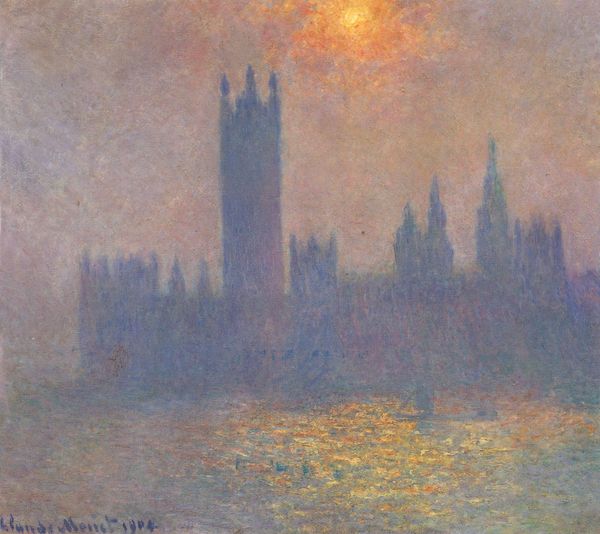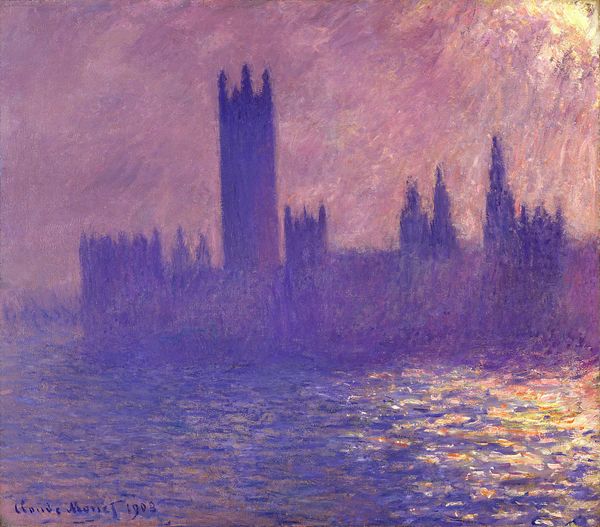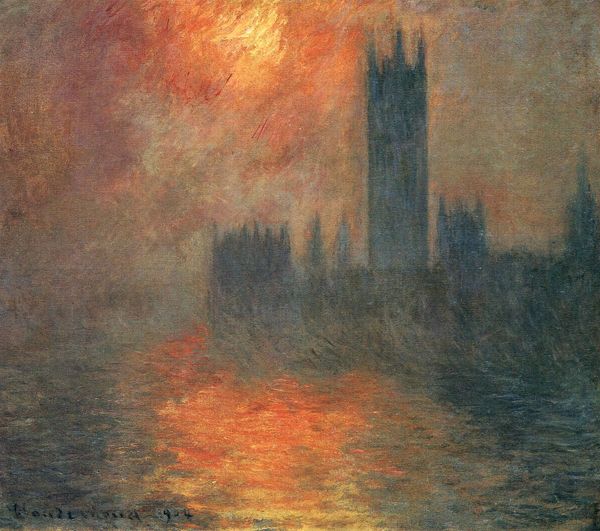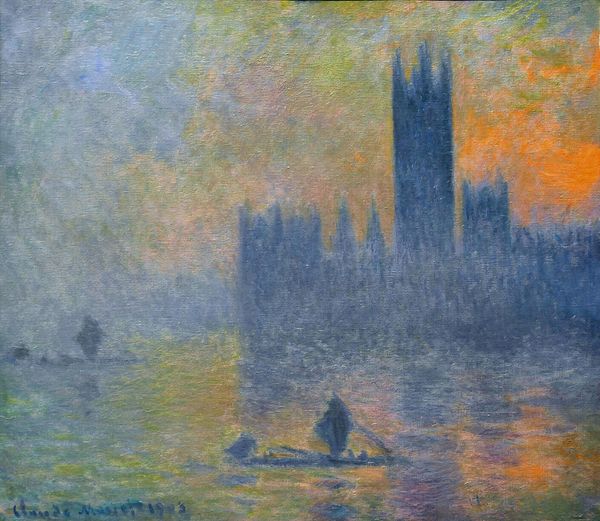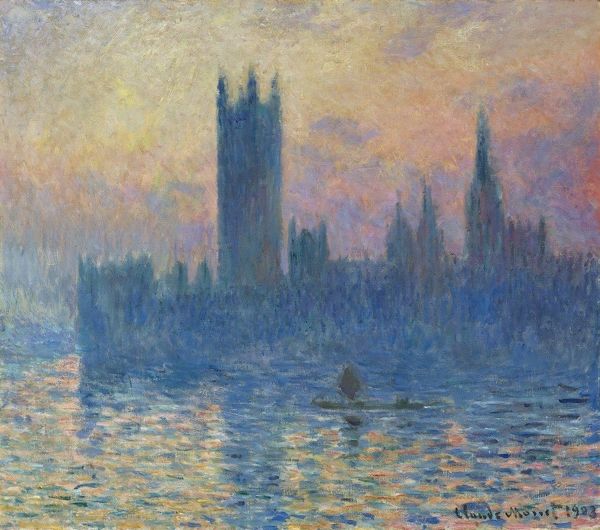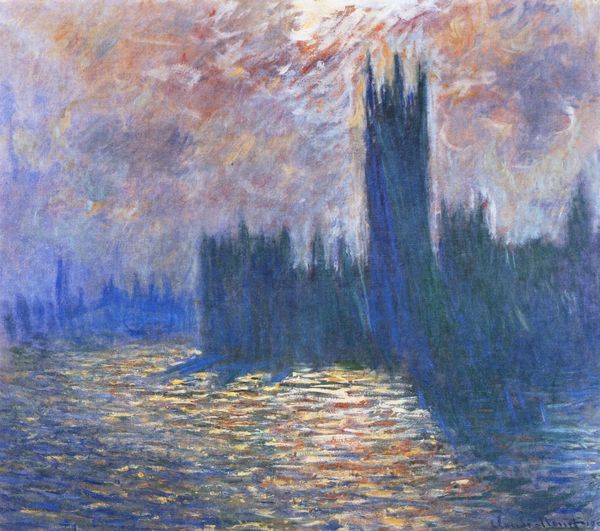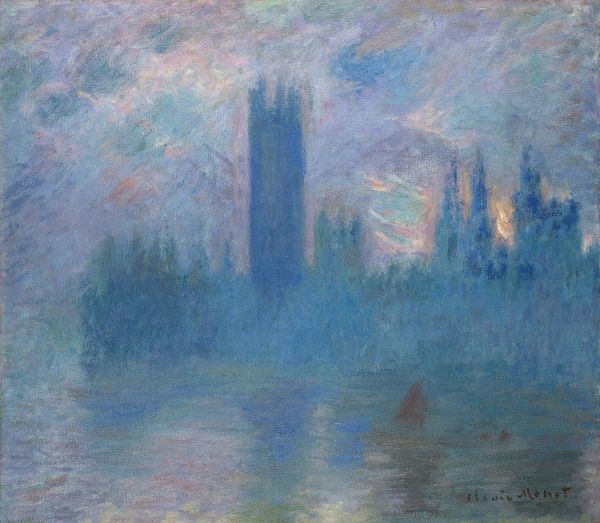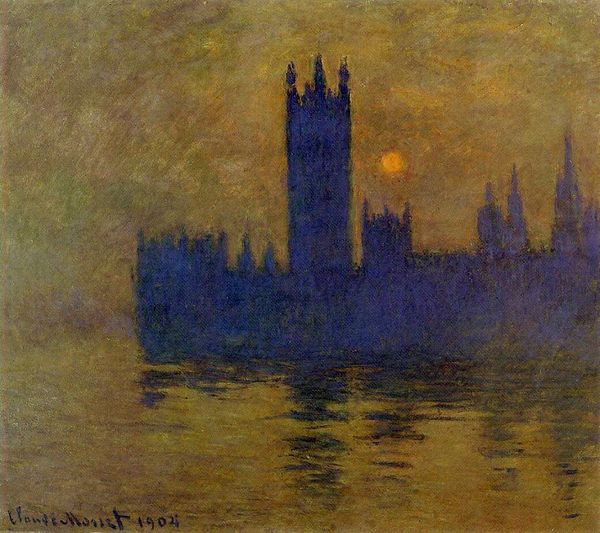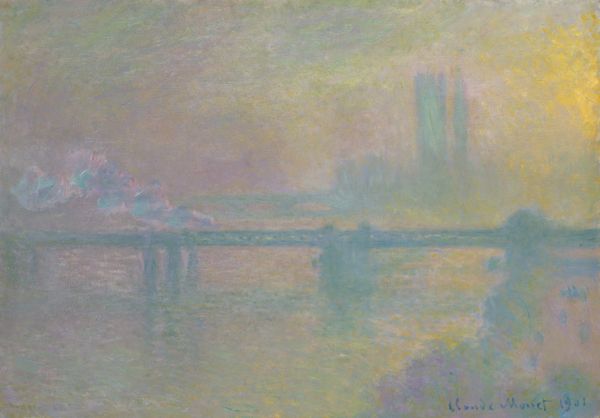
Copyright: Public domain
Curator: Claude Monet created this oil painting, “Houses of Parliament, London, Sun Breaking Through,” in 1904. It is currently held here at the Musée d'Orsay. Editor: It's an ethereal dreamscape, isn't it? The soft purples and blues... the barely-there rendering of the Parliament. The color palette is just captivating. Curator: Monet began seriously documenting the Houses of Parliament in 1900 during his extended stays in London. The painting offers not just a picture but a profound commentary on industrial society as well. The industrial smoke was very present and he really wanted to create a social commentary about it. Editor: Absolutely. This work really stands at the crossroads of industrialization, colonialism, and even gender dynamics. The very act of monumentalizing Parliament—the center of British power—while simultaneously obscuring it through an atmospheric haze, speaks to a nuanced perspective on empire, no? It is really amazing the way he manages to critique all of the sociopolitical subjects of the moment. Curator: I agree. And, you know, there's also the inherent commentary on the role of art institutions at the time. The hazy dream vision feels almost antithetical to the academic traditions of art. Editor: The painting process reflects the shifting position of power within the traditional arts as well. This wasn’t something he created in a day but rather several versions within years that are almost imperceptible when it comes to each version's difference with each other, because it reflected what it meant to live within these spaces for the working class. I’m not sure this came through at all at that time period and I can see it much more clearly with my perspective as a scholar in the 21st century. Curator: Precisely! We can almost see Monet’s interest as he uses those rapid brushstrokes which add a depth beyond visual realism. I agree this would not have been possible to grasp without the current scholarship. It enriches the narrative around both art and history so seamlessly. Editor: The discourse we've had truly does justice to the painting's layers of meaning; an aesthetic contemplation as well as political symbolism for future interpretations. Curator: Indeed, a dialogue that I hope enables people to truly observe beyond its beauty and comprehend this pivotal instance through the socio-historical analysis it presents.
Comments
No comments
Be the first to comment and join the conversation on the ultimate creative platform.

